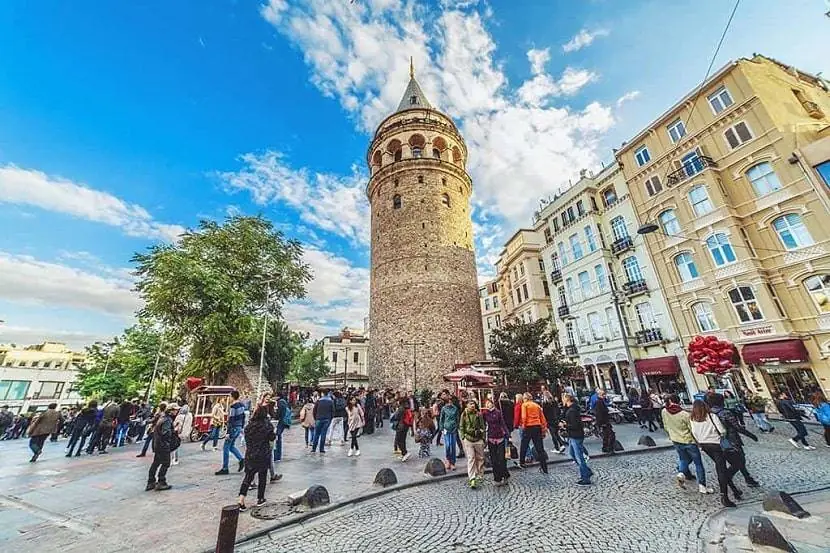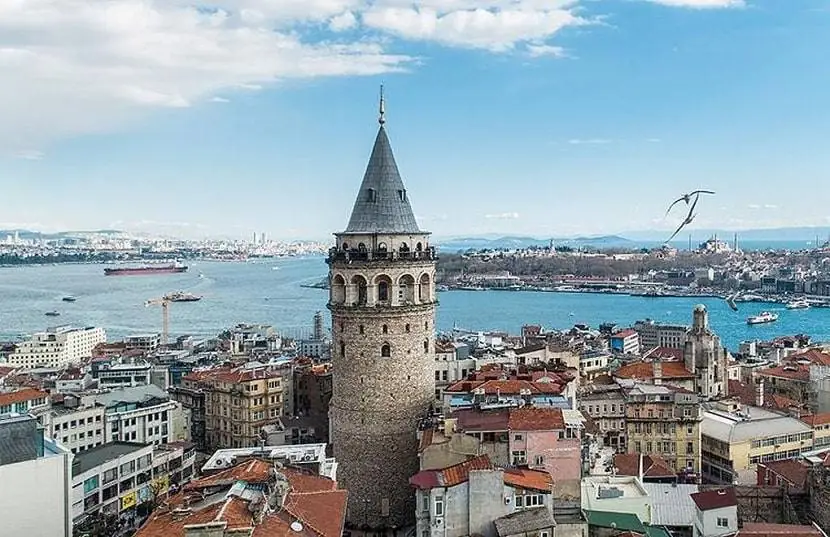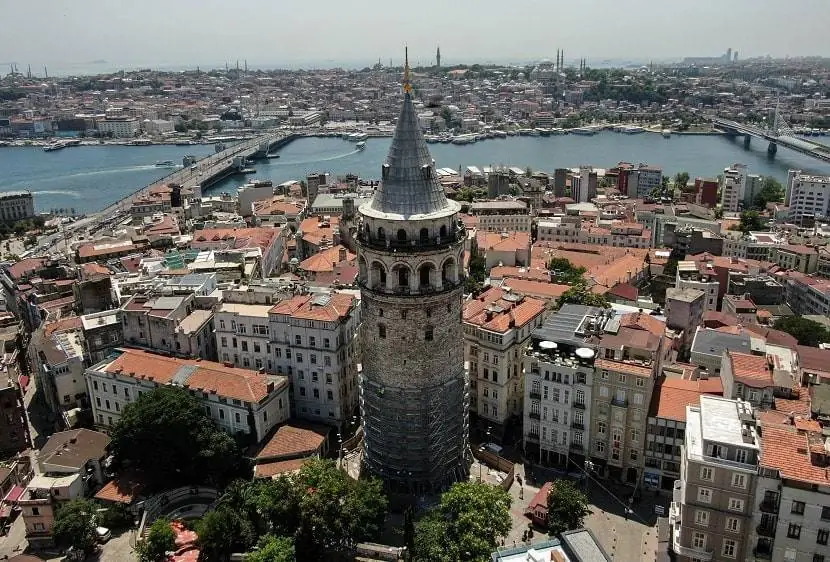Because of its cultural and historical legacy, Galata is a wonderful Beyoglu district. It is located downstream from Beyoglu and is encircled by the Golden Horn and the famed Galata Tower in the Azapkapi and Karakoy quarters. The name of Galata neighbourhood was derived from the Greek word “gala,” which means “milk,” and stands for the dairy market that was once on the grounds of its fantastic Galata Tower, topped by a hat roof, Kuledibi area with the sweet narrow streets that accommodate lovely cafés and restaurants – the best of Galata Istanbul.
About

At the northern side of the Golden Horn, Galata is on the northern side of Square Taksim. Galata was enclosed by walls built by the Genoese until the 19th century. The walls begun near the Golden Horn on Azapkapi. The Tower of Galata was the northernmost observation tower, and from that point the walls go down to Tophane.
During the Byzantine period its name was “Sykai” (fig field). It was also known in Greek as “Peran en Sykais,” meaning the “fig field of the other side.” The Levantines’ name “Pera,” stemmed from this origin. Galata originated either in Greek “galaktos” (milk) or in Italian “calata.”
Geographically and traditionally, Galata is on the European side of Istanbul. It was founded as a western, Latin and Catholic colony close by the Eastern Orthodox Byzantine Empire’s capital of Constantinople. The Venetian/Genoese governments changed their hands, but always remain Latin and Catholic. After the capture of Istanbul, that did not change. But for Greeks and Jews this was made by Sultan Mehmed the conqueror. Whilst Galata became a non-Latin settlement, it remained a non-Muslim enclave near Islam’s capital.

♦ 5 Days Turkey Tour – Istanbul Cappadocia Tour
“The other side” so indicates not only the opposite side of the golden horn, but also culturally the other side. The residents of Galata sometimes side by side with the city’s foes. When the Latin Crusades captured Constantinople in 1204, Galata deceived the local population for the first time. During that occupation Galata assisted the Latins, and Latins were looting Istanbul. One of the grounds of the Byzantine Empire’s decline was that occurrence.
Even the Ottoman Empire was not true to Galata. Galata was a key “capitulation” centre that caused the Ottoman Empire to fall. Since the beginning of the 19th century the Empire has had a big debt of Galata bankers, and the Empire was financially pillaged. In its freedom from the Ottomans, Greek bankers of Galata also backed Greece.
How to Get to Galata Istanbul?

♦ 7 Days Turkey Tour Package – Western Turkey Tour
Getting there is easy, as it is one of the most famous hubs for both visitors and local people in Istanbul. The area is Karakoy and Tophane. You can find several transport choices for intercity transport. Galata, Karakoy and Tophane can be accessed;
If you are to move from Sultanahmet and Eminonu, take the Bagcilar-Kabatas tram (T1 line) and drop off at Karakoy stop, or walk the Galata Bridge.
If you are to move from Taksim, you may take the Bagcilar-Kabatas tram (T1 line) from the Kabatas and drop off at Karakoy stop. To get to tram stops; from the Taksim Square, you may take the Taksim-Kabatas funicular (F1 line), get to Kabatas tram stop. And from the end of the Istiklal Avenue, on the Tunel Square, you may walk downwards or take the Tunel-Karakoy funicular (F2 line) to get to Karakoy.

